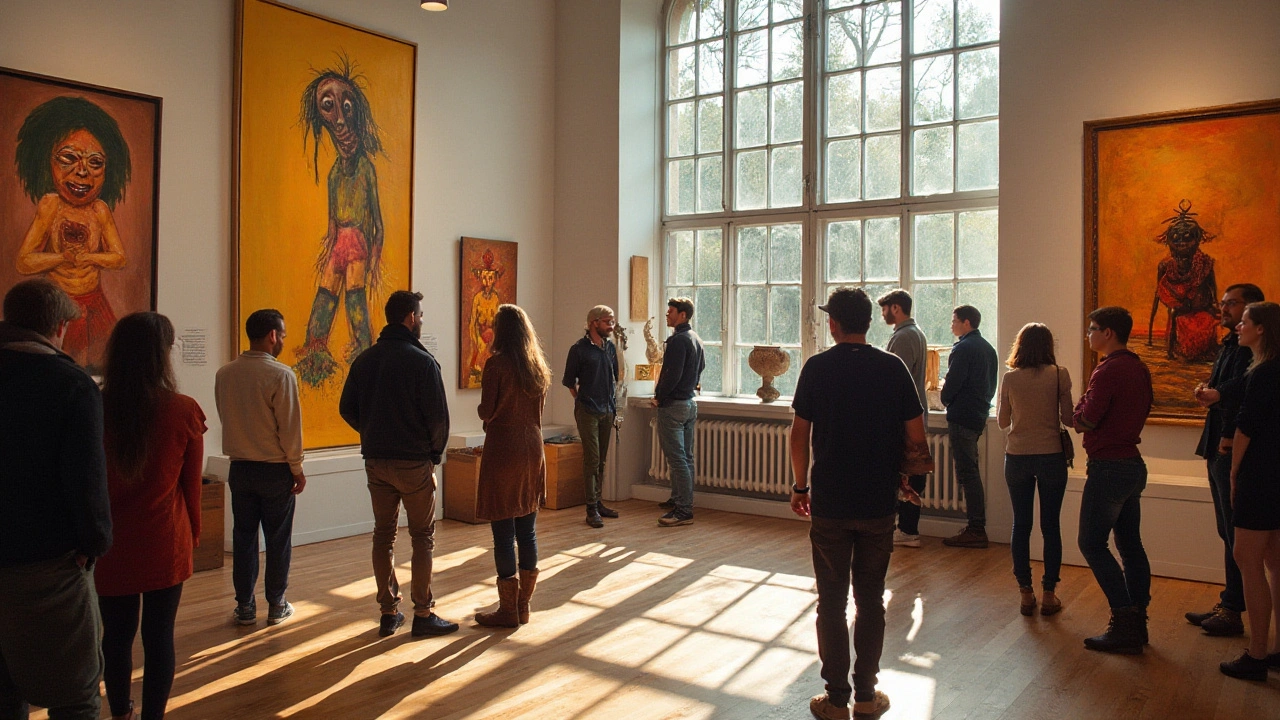Primitivism: What It Means in Art and Why You Care
Primitivism is when Western artists borrow styles, symbols, and ideas from non-Western or earlier cultures to break away from academic rules. Artists used masks, folk patterns, simple forms, and bold colors to find new ways of expressing feeling and form. That borrowing reshaped modern art in big ways and still shows up around us in design, fashion, and tattoos.
It started in the late 19th and early 20th centuries. Painters like Paul Gauguin and Pablo Picasso looked to African, Oceanic, and folk art to escape European traditions. They weren’t copying exactly; they mixed what they saw with their own ideas to create fresh imagery. That mix helped launch movements like Primitivism, Cubism, and Expressionism.
How artists used primitivism
Artists used simplified shapes and direct emotion instead of trying to render perfect perspective. That made work feel immediate and raw. Masks inspired faces that look flat and symbolic rather than realistic. Patterns and materials from hand-made crafts encouraged texture and rhythm in paintings and sculptures.
Using those ideas pushed boundaries. Picasso’s early experiments with African masks helped him break objects into geometry, which changed how people thought about painting. Gauguin’s travels led him to color and subject matter that upset polite taste but opened new creative paths. Those experiments helped modern art stop imitating nature and start inventing new visual languages.
Problems and responsibility
Borrowing from other cultures comes with serious problems. Many artists ignored the original meanings of objects and treated them as exotic props. That often erased the voices of the people who made those traditions. Today we call that cultural appropriation and colonial thinking, and it’s right to question the history.
You can still study primitivism without ignoring harm. Look for writing that includes voices from the cultures involved, not just Western critics. Museums and books that explain context, function, and meaning help you see both the art and its origins. When makers borrow, credit and collaboration matter.
Explore primitivism by visiting shows and reading essays that include voices from the cultures shown. If you’re making art, reach out to communities, ask permission, and offer credit or collaboration. For casual fans, follow museums and smaller cultural centers that explain objects’ history. Look for exhibition labels that mention makers, location, and use. That’s a simple way to enjoy powerful work while honoring the people who made it. Keep asking questions.
Primitivism shows up in unexpected places now: graphic design that uses bold shapes, fashion that borrows folk patterns, or tattoos referencing traditional motifs. If you like modern art, you’ll find traces of primitivism in Cubism, expressionist painting, and some installation art. Want a concrete read? Check pieces on Cubism or the ukiyo-e influence on Japanese tattoos to see how cross-cultural exchange changed visual culture.
Start by looking closely. Ask where an image came from, who made it, and what it meant before it became “modern.” That simple habit makes you a smarter viewer and supports more ethical art today.


